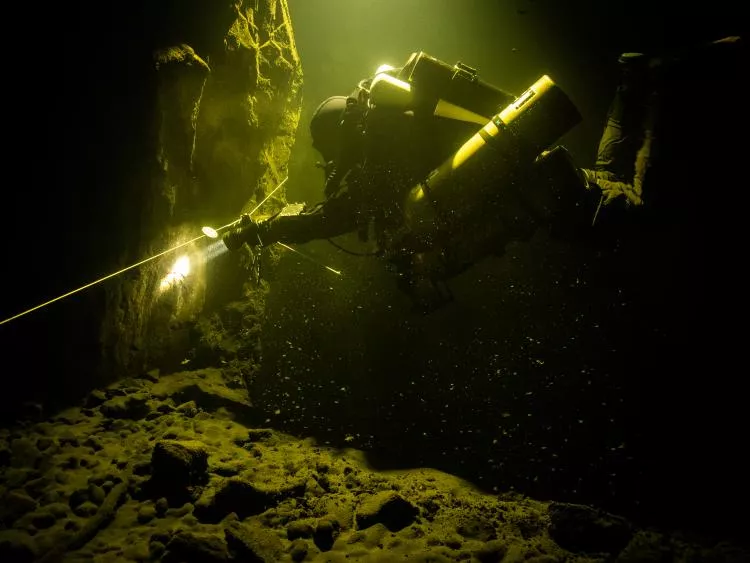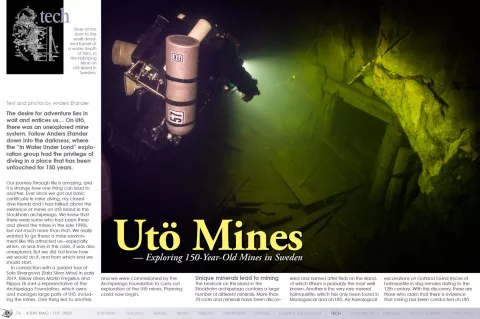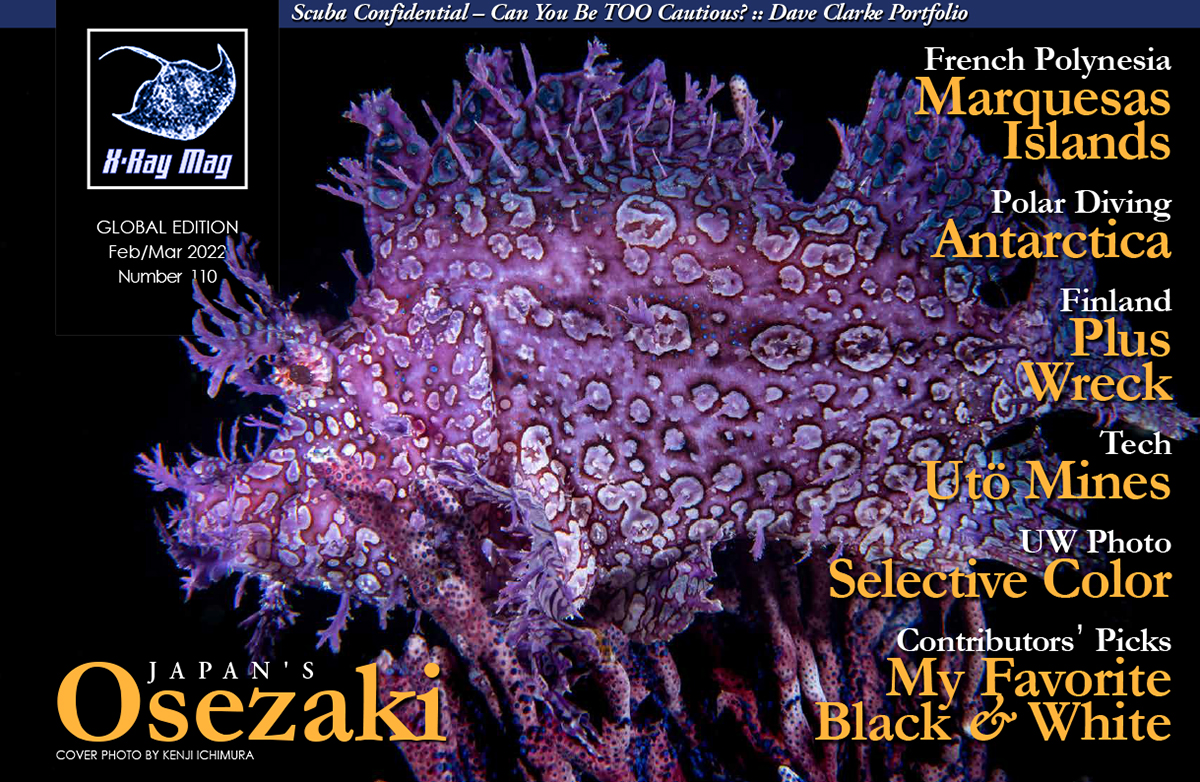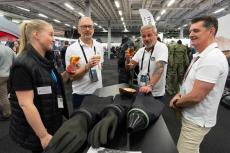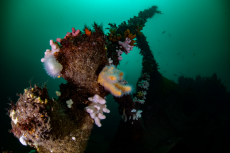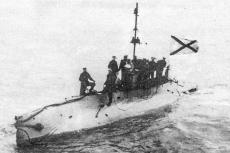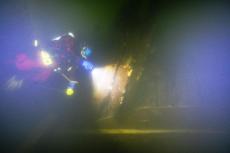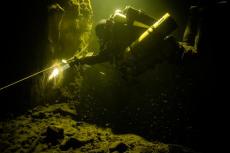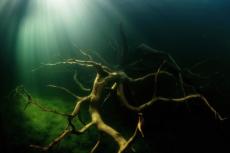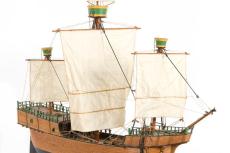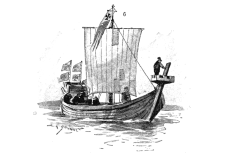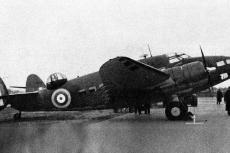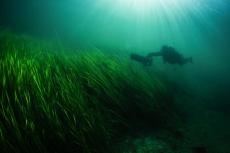The desire for adventure lies in wait and entices us… On Utö, there was an unexplored mine system. Follow Anders Etander down into the darkness, where the “In Water Under Land” exploration group had the privilege of diving in a place that has been untouched for 150 years.
Contributed by
Our journey through life is amazing, and it is strange how one thing can lead to another. Ever since we got our basic certificate in mine diving, my closest dive friends and I had talked about the existence of mines on Utö Island in the Stockholm archipelago.
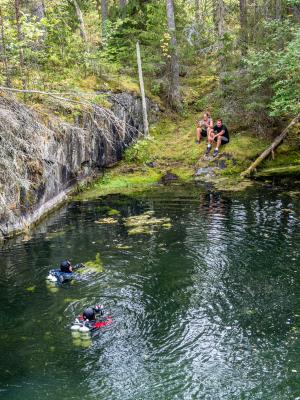
We knew that there were some who had been there and dived the mines in the late 1990s, but not much more than that. We really wanted to go there; a mine environment like this attracted us—especially when, as was true in this case, it was also unexplored. But we did not know how we would do it, and from which end we should start.
In connection with a guided tour of Sala Silvergruva (Sala Silver Mine) in early 2019, fellow divers Martin Fregelius and Filippa Ek met a representative of the Archipelago Foundation, which owns and manages large parts of Utö, including the mines. One thing led to another, and we were commissioned by the Archipelago Foundation to carry out exploration of the Utö mines. Planning could now begin.
Unique minerals lead to mining
The bedrock on this island in the Stockholm archipelago contains a large number of different minerals. More than 70 rocks and minerals have been discovered and named after finds on the island, of which lithium is probably the most well known.
Another is the very rare mineral holmquistite, which has only been found in Madagascar and on Utö. Archaeological excavations on Gotland found traces of holmquistite in slag remains dating to the 12th century. With this discovery, there are those who claim that there is evidence that mining has been conducted on Utö since then. Historically, mining on Utö was only first mentioned in writing in 1544.
During the 17th century, mining operations were expanded considerably, and several new mining holes were opened, among them Finngruvan and Långgruvan. Mining then took place under the responsibility of various owners, until 1878, when the business was closed down. At the time, the breaking method was used to mine, which meant that one set fire to the rock and then knocked off the parts that became porous.
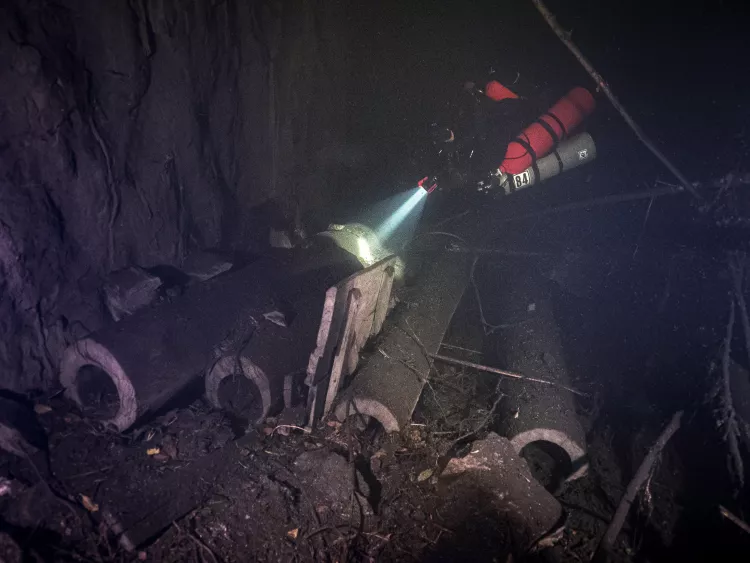
For each load of wood, about 500 kilos of rock mass was normally released. Gunpowder had also been used in the mine, but only on a small scale. The orebody on Utö is rich in iron, with concentrations of up to 85 percent, compared to, for example, the orebody found in Kiruna, which today is around 45 percent.
The Utö mines can be considered open mine holes, dug straight into the ground, and the central area consists of ten different mines. Today, all are filled with rain and meltwater; the inflow of groundwater is and has always been small on Utö. All depth markings on the maps are based on the mine’s balanced point, and the water surface today starts at about 10m below this point. The Nyköping Mine, as the name indicates, delivered its ore for enrichment to Nyköping.
This mine is also called Storgruvan (Big Mine), and with its 215m, is the largest and deepest on Utö. To the north is first Långgruvan (Long Mine), which is about 60m deep and named after its appearance; then comes Finngruvan (Finn Mine), which is 150m deep, whose ore was sent to Finland for enrichment. Under the ground between Nyköping Mine and Långgruvan is Stjernheim’s shaft, which is 130m deep.
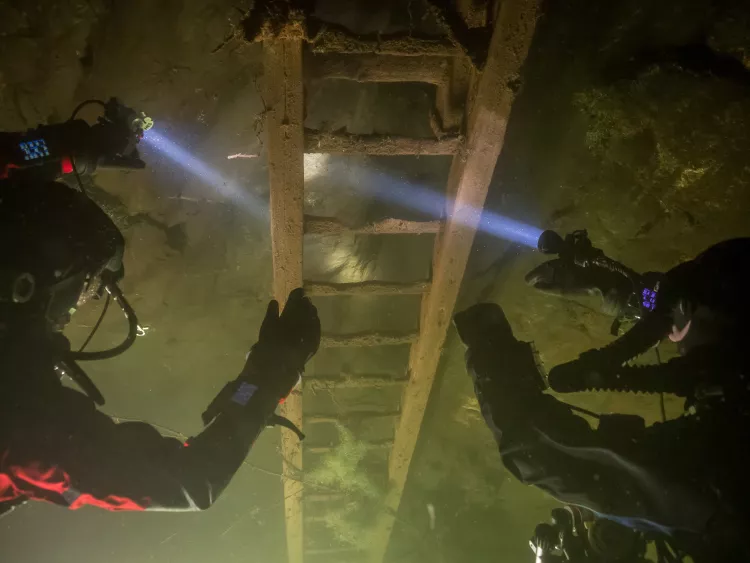
The adventure begins
In the summer of 2019, we started conducting dives through the exploration group “In Water Under Land.” The group consists of Martin Fregelius, Filippa Ek, Linus Malmgren and myself—all experienced rebreather divers in a mine environment.
After a couple of trips to Utö for reconnaissance and planning, we loaded all the equipment on a pickup that, with the help of Utö Sjötransport, was driven out to the island. Safety planning was a challenge; we knew that the diving depths would be deep, with long decompression times as a result. For that reason, we conducted the dives during late summer, so that the temperature of the surface water would be as high as possible. From six metres and shallower, it was a pleasant 19°C, otherwise the temperature was a constant 5°C in all the mines.
We also set up a communication system from a depth of 15m to the surface, with the help of writing boards; plus, we brought with us plenty of oxygen, to have both in the water and on land. A responsible dive leader was always on land for surface support and any contact for help.
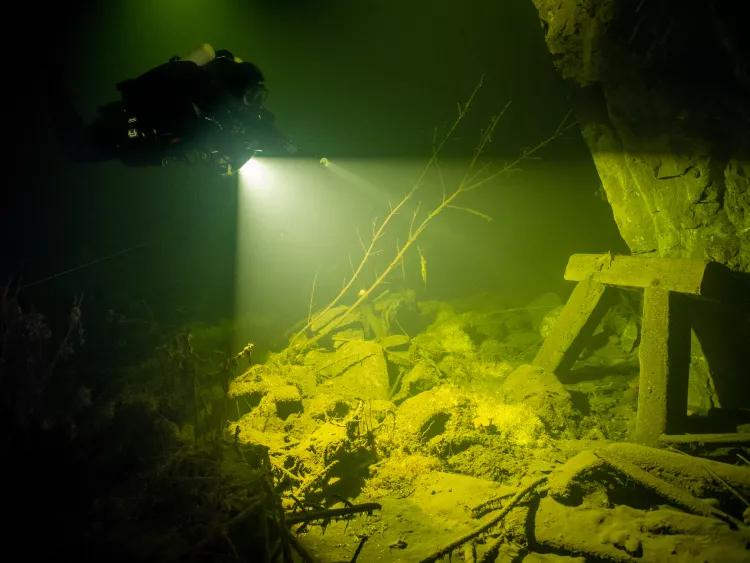
Diving
The first dive was “an experience” in many ways. Fregelius and I stepped in without knowing what awaited us. The visibility in the warm surface waters was, as expected, a bit cloudy from summer growth, but down in the depths there was about 15m of visibility. Bare walls fell into the depths below us as we followed the sides of the mine, counterclockwise, slowly heading downwards. The primary goal was to find the guide lines from the dives made in the 1990s and follow them, to see what had already been done. After that, we would swim around the perimeter of the mine, first at 40m, then at 30m, 20m, followed by a final round at 10m.
Traces of the miners
On the way down, we came across the first remains from the days of mining: a solid ladder attached to the bare mountainside with rugged chains. The sides of the ladder were made of logs and between these were worn wooden steps, where one could clearly see how the miners’ steps had worn them down over the years. The ladder was 15m long and consisted of two joined units.
At the ladder, we also found the remaining rope lines from the previous dives, and we followed them down to a plateau at 50m, where they stopped. Here, we found a small dead-end tunnel that had previously been blocked by a solid door, which now lay on the plateau.
Inside the dead-end tunnel, there were remains of several barrels, which indicated that it was some kind of storage place (maybe for gunpowder?). Our tours around the mine hole at the predetermined depths did not yield much, only bare walls beyond the ladder. But visibility improved considerably; after we passed a five-metre-thick layer of white fog, there was crystal-clear water from 40m and down!
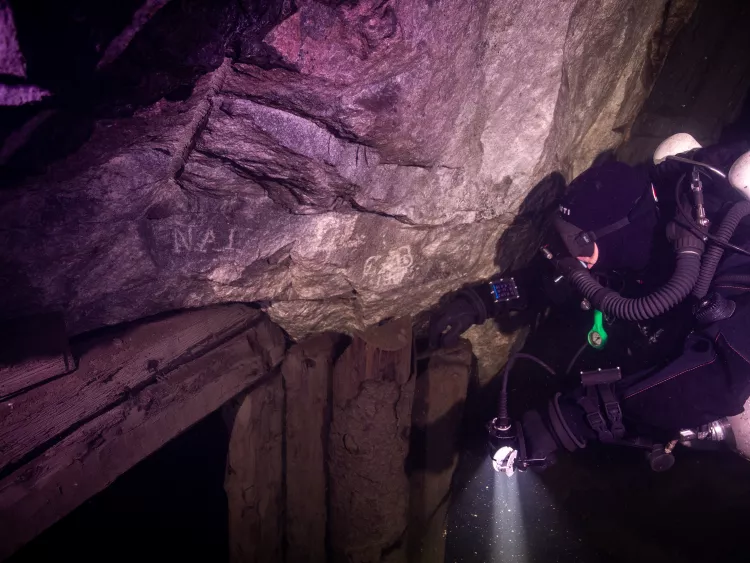
The next team in the water, Malmgren and Ek, did about the same dive profile as us, but when they broke the surface, the first thing they asked us was, “Did you see the inscriptions?” Above the door, at a depth of 50m, they had found at least three engraved initials and a year—1875. Since then, we have, together with a local community association on Utö, been able to identify one of the people behind the initials “CAB.” His name was Carl August Björkman, who had worked as a miner on Utö since 1863. In 1875, he lived on Utö with his wife Emma Kristina Westerlund and their two children, Augusta Kristina and Karl Hjalmar.
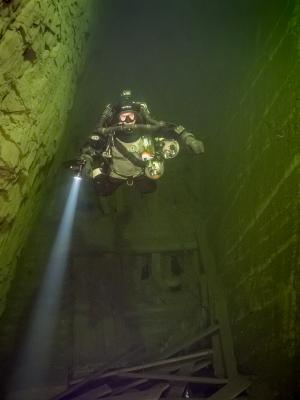
To dive where time has stopped
During the next few dives, we continued past the 50m plateau, towards Stjernheim’s shaft and down to the ledge where there was a water depth of 74m. This is exactly on a par with the water lowering that was done in the mine in connection with test drilling in the 1950s. This means that we were right on the borderland, where time had stood still since the end of the 19th century—an immense feeling!
We found several ladders, railings and some wooden structures. At 74m, we encountered a couple of large wooden walls that blocked two large and lofty chambers, four metres wide and almost ten metres high. During a subsequent dive, we were able to locate the other side of the walls. They had probably been designed to control airflow in the mine and prevent cold drafts during the winter months.
On the last weekend of summer 2019, we completed the deepest dive—down to the bottom of Spensgruvan. According to the maps, the bottom of the mine was at a depth of around 90m, which meant a water depth of 80m. However, when we made our turnaround in the dive, we found that we were at 94m, and the visibility there was almost zero; we were then probably close to the floor of the mine.
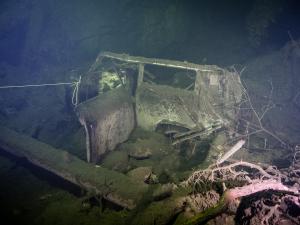
One might think that the bottom of these open pits would be filled with rubbish thrown down over the years, but this was not the case. Fallen trees and plant material were abundant, but there were surprisingly few remnants of human refuse. However, we did find one of the cars which are so notorious on the island, down at the bottom of Spensgruvan.
In the summer of 2020, it was time to carry out the second year of exploration. To help us, we expanded the “In Water Under Land” exploration group with four divers: Jonas and Victor Enevold, Jimmy Sandström and Christer Hesslin. During our three-week expedition, we conducted a total of 14 dives, searching all the mines in the area down to a water depth of just under 100m. We also managed to connect all the mines by water.
One of the cars, which were notorious on the island, was found at the bottom of Spensgruvan, 85m below the surface.
Finding the pumping plant
One of the major challenges with mining is getting rid of running groundwater, and for open mines like those on Utö, also precipitation. In old writings about Utö, we found notes describing how almost half the day was spent lifting out water that had flowed into the mine before the miners could even begin mining. At the beginning of the 19th century, investments were therefore made in a pumping plant, powered by a steam engine, on Utö. It functioned in a similar way to the bilge pumps that existed on the sailing ships of the time, working with a pump rod that created negative pressure and lifted the water below it.
During one of the dives that we conducted in the first year, we found, stacked against a wall at a depth of 55m, six drilled logs, prepared for such a pumping plant. In Finngruvan, this past year, we found the pumping plant itself, still attached to the rock wall. There were pump rods still left here, mounted several in a row. Inside one of them, a pump rod was still in place.
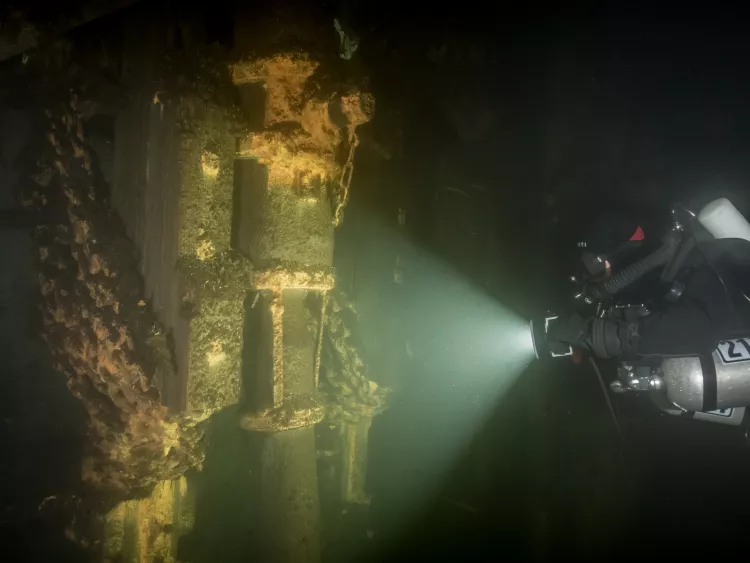
Afterthoughts
It has been fantastic to explore these mines and to dive in places where no one has been since the mine was closed almost 150 years ago. The inscriptions and the identification of Carl August Björkman as well as the ladder along the wall, with steps worn down by miners, which sat 200m above the bottom, gave me a feeling of connection to a bygone era. It was a time of hard work and difficult conditions for the miners, but at the same time, they had, most likely with pride, carved their initials for posterity to see.
We have been very well received on Utö Island by those who live there, and we have tried to share our experiences and discoveries with others. In 2021, the mining museum on the island included some of our photos in their permanent exhibition. We also undertook another expedition that same year. There was a place down at 110m where, according to the maps, there would be a ledge.
The curiosity was great about what might be found there.

